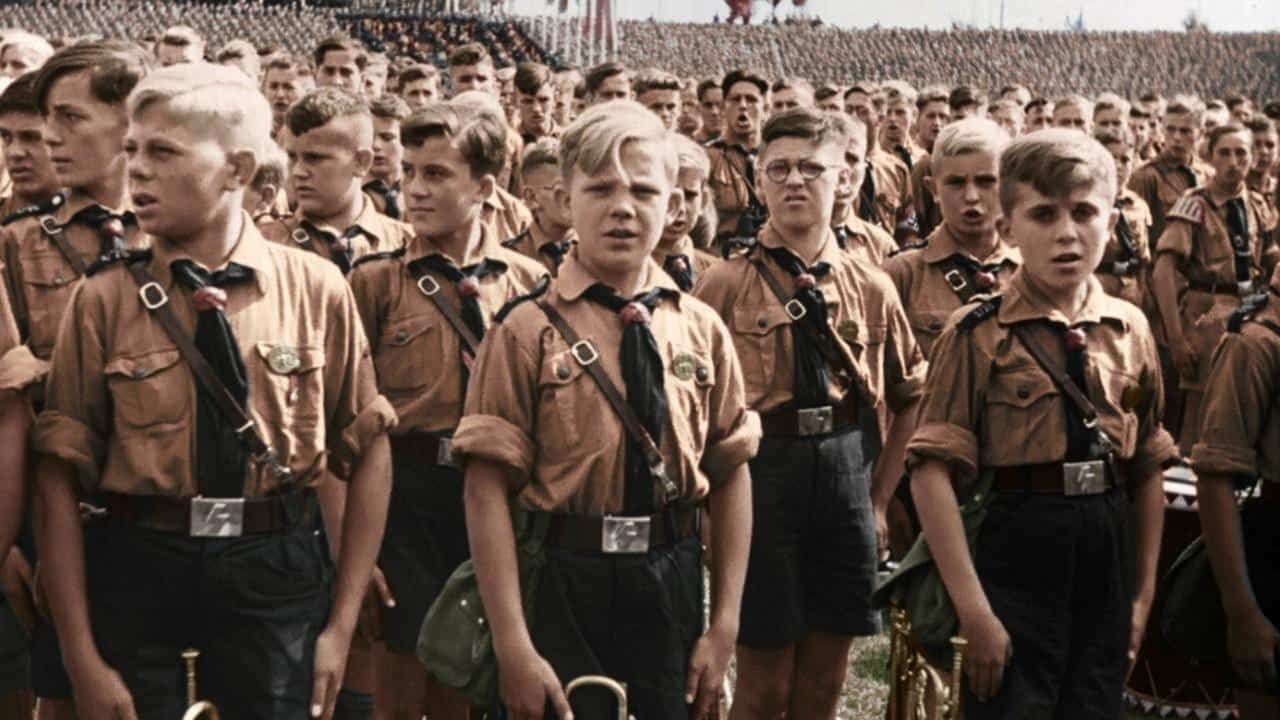Hitler’s power may lay us low,
And keep us locked in chains,
But we will smash the chains one day,
We’ll be free again
We’ve got fists and we can fight,
We’ve got knives and we’ll get them out
We want freedom, don’t we boys?
We’re the fighting Navajos!
-Song of the Navajos, a subset of the Edelweiss Pirates, an underground German youth group
Among the myriad crimes of the Third Reich, not least among them is how its leadership went about the mass indoctrination of innocent German children, to turn them into obedient and hate-filled cogs in their monstrous machine. However, not all German children were willing to accept the fare fed them by the Nazis, and some of them adamantly refused to just go along. In a mixture of youthful courage, and teenagers being teenagers and wanting to express their individuality, some German youngsters, who came to be known as the “Edelweiss Pirates”, bucked the system and defined themselves in opposition to the Nazis.

ADVERTISEMENT - CONTINUE READING BELOW
The Hitler Youth
In 1922, the Nazis established a youth arm to recruit, indoctrinate, and train members for its paramilitary, the Storm Troopers, AKA the Brown Shirts. As they became more numerous and powerful, so did the size of their youth arm, which was renamed the “Hitler Youth” in 1926. When the Nazis gained power in 1933, they made their youth arm Germany’s sole official youth organization, and took over and folded preexisting youth organizations into their own. Hitler appointed a Reich Youth Leader to oversee the takeover.
The Nazi youth organization was divided into the Hitler Youth proper for boys aged 14 to 18, with a junior branch for boys aged 10 to 14. German girls from 10 to 18 were given a parallel organization, the League of German Girls. Youngsters were taught Nazi doctrine, and encouraged to report those who went against it – including their own parents, if they criticized Hitler or the Party. Children were also taught to link those designated enemies by the state – such as Jews – with societal decline, and with German defeat in World War I.
Eventually, membership in the Hitler Youth became obligatory. The parents of children who were not signed up fell under suspicion and were often brought in for questioning or otherwise harassed by the authorities, while their children were subjected to peer pressure and ostracism by schoolmates and teachers. It worked. At the end of 1932, the Hitler Youth had 108,000 members. By the end of 1933, the Nazis’ first year in power, that number had shot up to 2,300,000, and by December of 1936, there were more than five million Hitler Youth. That month, membership was made mandatory for all Aryan youth, and in March of 1939, they were conscripted en masse into the organization, regardless of their parent’s objections.

ADVERTISEMENT - CONTINUE READING BELOW
In 1940, a year into WWII, the Hitler Youth were reorganized into an auxiliary force to perform war duties. Chapters became active in local fire brigades and in recovery efforts after Allied bombing raids, helped deliver the mail, and assisted the military, such as by serving alongside antiaircraft gun batteries. As the war dragged on and losses mounted, Germany faced a growing military manpower shortage. So in 1943, the Hitler Youth was tapped as a manpower reserve, and a plan was approved for the formation of an SS division comprised of Hitler Youth – the 12th SS Panzer Hitler Youth.

ADVERTISEMENT - CONTINUE READING BELOW
The Hitler Youth division fought in Normandy in 1944, where it gained a reputation for ferocious fanaticism. As Germany’s situation grew more dire, the Nazis increasingly turned to their youth organization, and by 1945, Volkssturm units – the Nazi militias – were routinely drafting 12-year-old Hitler Youth members into their ranks. As the curtain fell on the Third Reich, Hitler Youth units played a conspicuous role in the last days of the Battle of Berlin, fighting so ferociously for their namesake that only two members of a children’s unit manning the Nazis’ last line of defense survived.

